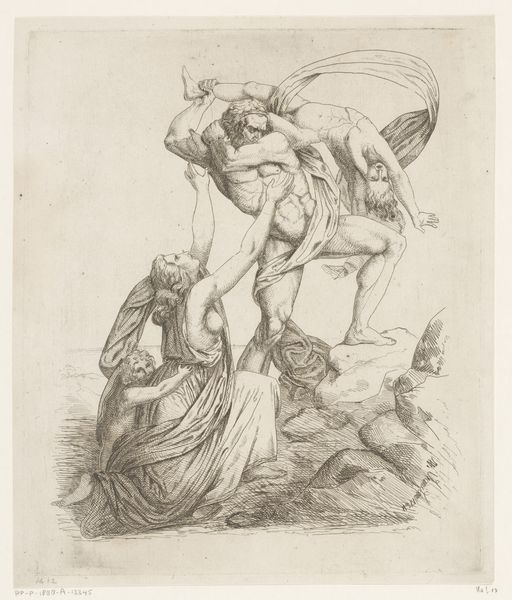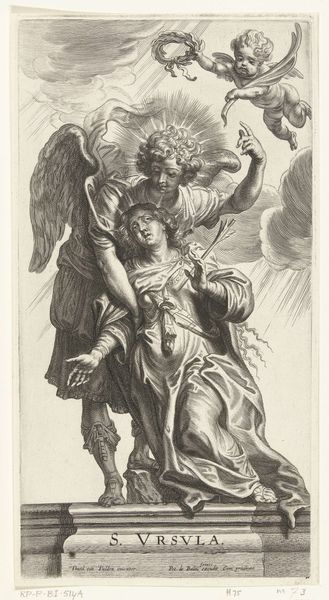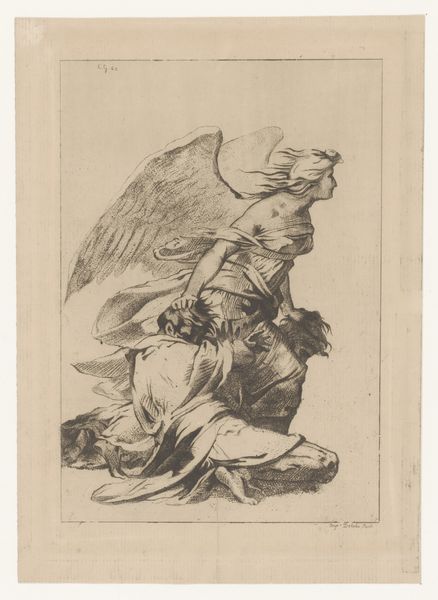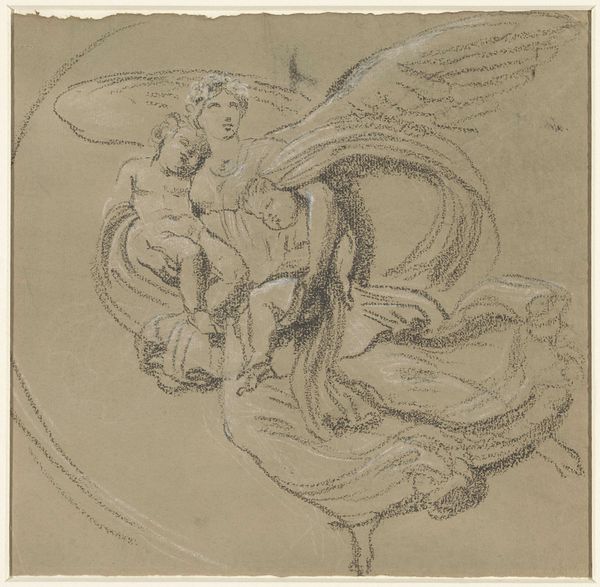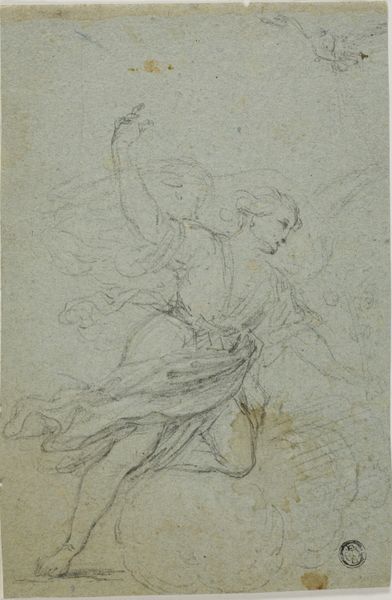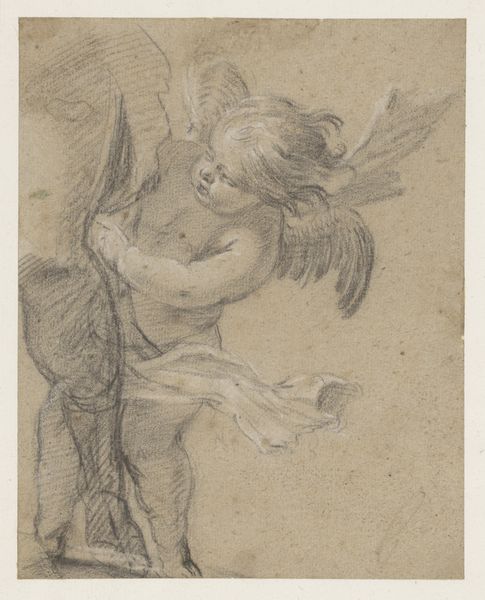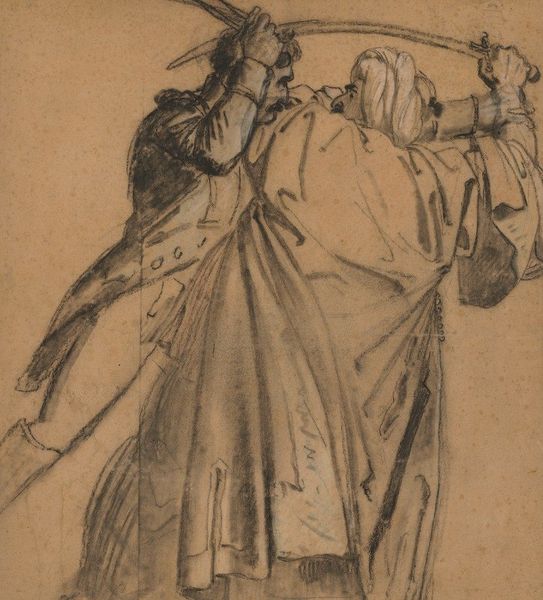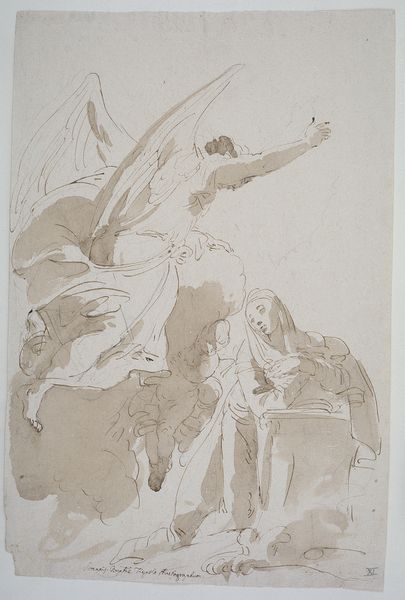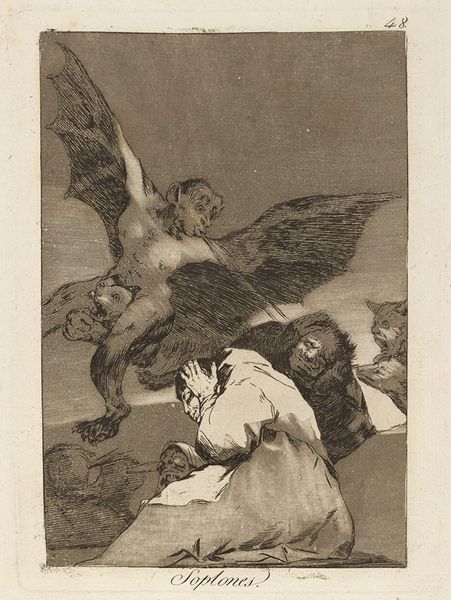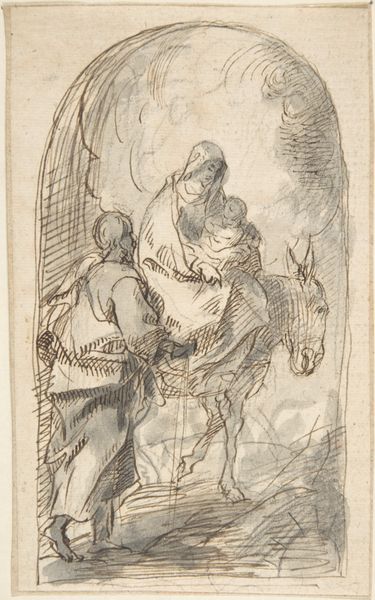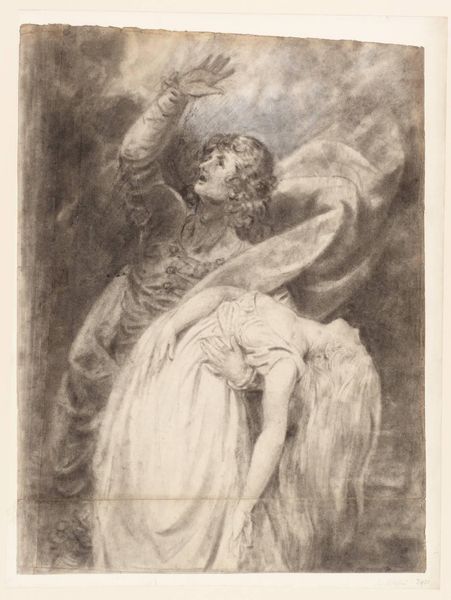
drawing, paper, ink
#
pencil drawn
#
drawing
#
narrative-art
#
baroque
#
pencil sketch
#
charcoal drawing
#
figuration
#
paper
#
charcoal art
#
ink
#
pencil drawing
#
pencil work
Dimensions: height 260 mm, width 210 mm
Copyright: Rijks Museum: Open Domain
Curator: Looking at this drawing, titled “Jacob Wrestling with the Angel,” made by Gerard ter Borch the Elder between 1617 and 1619, currently housed at the Rijksmuseum, one can't help but admire the energy captured in a single moment. The use of ink, pencil, and charcoal on paper brings an immediacy to this biblical struggle. What are your initial thoughts? Editor: The first word that comes to mind is 'visceral.' The rawness of the lines, the way the angel seems to envelop Jacob – there's a claustrophobic, almost desperate feel. It really underscores the intimacy and intensity of this encounter. But it also looks like an embrace. I wonder what other social concepts from that era could also use those expressions? Curator: Absolutely, and it’s vital to understand how Ter Borch's depiction adheres to—and deviates from—traditional representations. Wrestling matches have complex meanings; it embodies struggle, power dynamics, and divine intervention in human affairs. Editor: And thinking about that divine intervention, doesn't this highlight Jacob’s agency? He's not passively receiving a blessing; he's fighting for it. He isn't kneeling and asking forgiveness. This feels deeply resonant in a time when marginalized people were claiming agency for their voices. I see parallels between his personal fight and their struggles against structures of power. Curator: That's a fantastic observation. Ter Borch invites us to consider Jacob’s personal transformation through symbolic interpretation and intense, personal, intimate contact. This mirrors a more profound exploration of identity and purpose – but can be interpreted as something more simple as the nature of wrestling, closeness, power. The composition draws the eye into their bodies. The lines of motion created by the composition directs us as viewer toward the focus of the event. Editor: It is fascinating. I initially reacted to the raw energy, but I agree, reflecting on the social and historical context brings another rich and very valid layer. Understanding power dynamics allows us to examine whose stories get told and how, also which kind of story is emphasized as something worth the cost. The intimacy and struggle also highlight the transformation. Curator: Precisely. Jacob’s struggle becomes a mirror reflecting human determination but also that this struggle happens inside the intimacy of shared bodies. A timeless commentary presented to our time from 17th century perception. Editor: Well said! Looking at it now, I have so much appreciation for its layers – both visual and thematic.
Comments
No comments
Be the first to comment and join the conversation on the ultimate creative platform.
